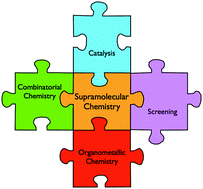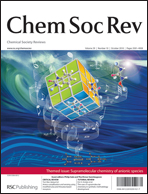The uses of supramolecular chemistry in synthetic methodology development: examples of anion and neutral molecular recognition†‡
Abstract
The principles of supramolecular chemistry have successfully permeated through a broad range of organic chemistry subdisciplines. One subdiscipline that is not routinely associated with supramolecular chemistry is that of organic synthetic methodology. Though sometimes indiscernible, non-bonded and bonding supramolecular interactions play a large role in chemical reactions and catalysis. Many synthetic methods hinge on the creation of anionic charge, albeit just partial, at some step during this process, and hence are prime targets for molecular recognition interactions. Examples are artificial enzymes, biomimetic catalysis, organocatalysis, and many of the

- This article is part of the themed collection: Supramolecular Chemistry of Anionic Species

 Please wait while we load your content...
Please wait while we load your content...